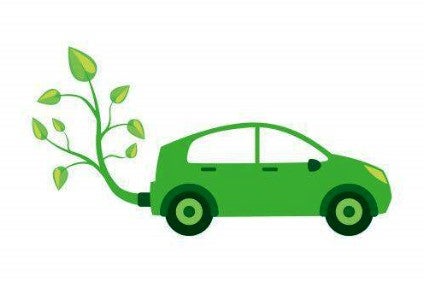
The climate crisis is not a new concern. However, as we get closer and closer to a tipping point, government mandates have overtaken social pressure in the attempt to limit global warming to 1.5°C.
In the automotive industry, a move towards carbon neutrality has begun, but original equipment manufacturers (OEMs) are still far away from net zero. Most OEMs aim to reach net zero by 2050, but incoming regulatory pressure on emissions will require them to improve current emissions reporting and curate more pragmatic decarbonization strategies.
The use of renewable energy is the best way to reduce Scope 1 and 2 emissions
Companies typically first aim to achieve net zero operations by reducing their Scope 1 and 2 emissions, then achieve net zero value chains by reducing their Scope 3 emissions. The transition of energy consumption towards renewable and low-carbon sources is the only viable decarbonization strategy that will allow OEMs to achieve Scope 1 and 2 emissions reduction targets.
This can be achieved through directly installing renewable energy sources on-site or purchasing electricity from renewable energy providers. From 2027, Renault is partnering with Voltalia, a renewable energy supplier, to supply up to 50% of the company’s electricity consumption of its production activities in France using solar panels.
To further help reduce Scope 1 and 2 emissions, the energy transition should be accompanied by efforts to improve overall energy efficiency.

US Tariffs are shifting - will you react or anticipate?
Don’t let policy changes catch you off guard. Stay proactive with real-time data and expert analysis.
By GlobalDataCarbon offsets should be avoided
A carbon offset is a reduction or removal of carbon dioxide (CO₂) or other greenhouse gases to compensate for emissions made elsewhere. Companies purchase them to reduce their net emissions when they cannot adequately cut emissions from direct activity. In the auto sector, carbon offsets are mostly used to mitigate Scope 1 and 2 emissions.
For the most part, OEMs should avoid investing in offsets and instead focus on investing in green energy and electrifying their vehicle fleets. Carbon offset projects, especially reforestation projects, are increasingly facing scrutiny over their dubious carbon-neutral claims, and carbon markets are becoming increasingly regulated by government bodies.
Companies can consider establishing carbon removal projects, allowing them to keep a closer eye on project performance. However, this requires significant investment. Technology-based carbon removals, such as direct air capture and biochar, where the amount of CO₂ removed is exact and measurable, will be a future option but have not yet scaled and remain expensive.
Decreasing Scope 3 emissions should be prioritized
Scope 3 emissions—the value chain emissions that an OEM is indirectly responsible for through its suppliers and customers—make up 99% of total emissions in the automotive sector. They include the use of sold product emissions, also called tank-to-wheel emissions, that are calculated based on a vehicle’s emissions throughout its lifecycle. These emissions are the most difficult to measure, but the most important to reduce in the transition to net zero.
Electrification of vehicle fleets is the main decarbonization strategy for the automotive industry, as it is the most important strategy to reduce tank-to-wheel emissions. The majority of newly released vehicle models are hybrid and/or electric vehicles (EV), as global EV sales are set to surpass 50 million units annually by 2028, according to GlobalData.
To reach net zero targets, OEMs should prioritize increasing battery EV production and sales over other hybrid and low-emissions vehicle options. However, there are a few challenges to OEMs’ net zero targets, namely:
- Improvements in EV production capacity are necessary to reach electrification targets.
- There is some concern over market demand for EVs. In October 2023, Ford and GM pushed back their electrification targets and spending on EVs due to lower-than-forecast demand.
- Development of alternatives to lithium-ion batteries and other LEV technologies should continue as supply volatility in the batteries market may cause unforeseen materials price hikes and supply chain disruption.
Electrification is also not a one-and-done solution. EV production emits more emissions than the production of traditional internal combustion engine (ICE) vehicles. Automakers must also adopt a circular business model and increase the use of sustainable materials to mitigate the environmental impact of EV production.
More: Net Zero Strategies in the Automotive Sector – Thematic Intelligence
Carolina Pinto, Analyst, GlobalData Thematic Team



